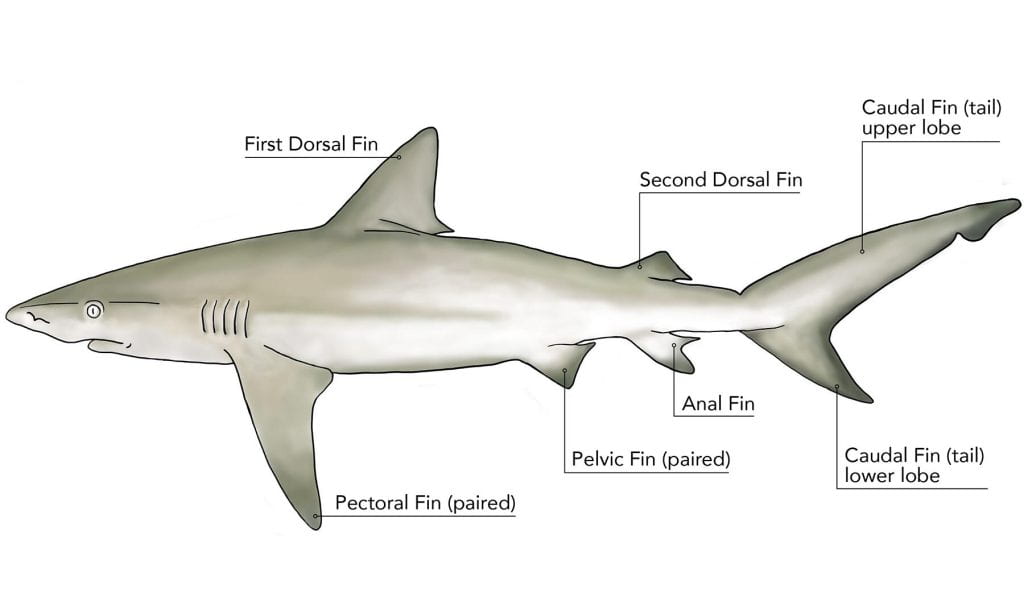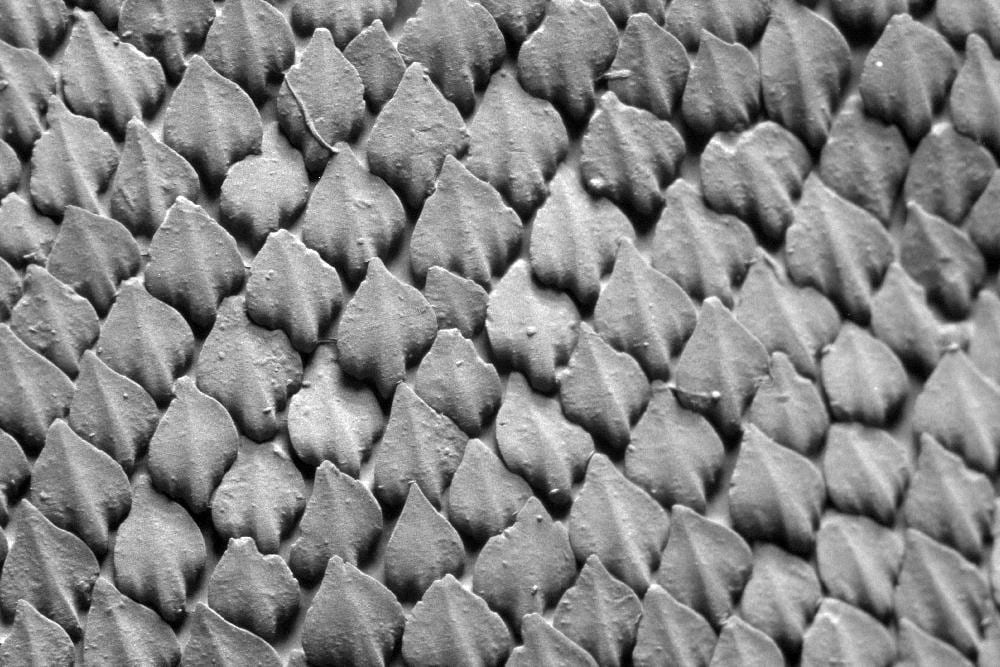Sharks
Streamlined Swimmers
Designed to Swim
Sharks are some of the oldest and, from an evolutionary perspective, some of the most successful marine vertebrates ever to have lived. They have been around in their current form for over 400 million years, since the geologic period known as the Devonian, and their earliest ancestors emerged in the Silurian, some 50 million years before that. Sharks have spent their entire evolutionary history in the aquatic environment, and the body design in many species has been honed over hundreds of millions of years to increase swimming performance. Attributes of body form, fins and even the skin, work in concert, enabling sharks to slice through water and execute complex maneuvers with startling speed and precision.

Shark Body & Fins
Today, there are at least 440 different species of sharks living in habitats ranging from the deep ocean bottom to shallow coastal waters, and even some freshwater rivers! Although aspects of a shark’s anatomy are tailored to its specific way of life, these are variations on a basic body form and style of movement that is distinctively “shark.” Most sharks have a body shape that is at least somewhat fusiform, or torpedo-like. As they swim, sharks use continuous lateral (side-to-side) undulations of the body. The pectoral fins on either side of the body are positioned and shaped to help the shark maneuver in all planes, often at “lightning” speed.
The shark’s tail, or caudal fin, is perhaps its most critical tool for rapid forward locomotion. For most sharks the tail is heterocercal, which means that it is characterized by an upper lobe that is larger and longer than the lower lobe. Because the tail is not symmetrical, it torques, or twists, the body of the shark as it beats. By controlling the motion in the two lobes of its tail, the shark can adjust the angle of propulsion.
Research on shark locomotion and hydrodynamics has been a major focus of scientists in the Lauder Lab at Harvard University. In this video, Professor George Lauder calls out different external aspects of shark anatomy and hydrodynamics using a blue shark from the museum’s fish collection.

Shark Skin
Shark skin is unique in the fish world. It is covered in denticles, microscopic structures coated with an enamel-like substance, and are more like teeth than scales. Other fishes grow and shed scales like fingernails, but denticles are hard and mineralized like teeth, and even contain nerve endings, which may help sense surface flow and/or bending of the body. Denticle shape and texture allow sharks to move through water effectively and may also deter attachment by parasites.

This scanning electron microscope image shows a microscopic view of the denticles of a leopard shark, Triakis semifasciata. How do you think they help the shark move through the water?
The valuable properties of denticles have inspired scientists and engineers to develop new technologies, including a sterile coating for hospital products and a high-tech swimsuit to help athletes move faster and more efficiently through the water. The swimsuit, which was made of material with denticle-like ridges, is so effective that it was banned from the Olympic Games because officials claimed it gave athletes an unfair advantage. Learn more in the following video where Harvard Postdoctoral Fellow Molly Gabler-Smith explains how denticles help improve shark hydrodynamics.